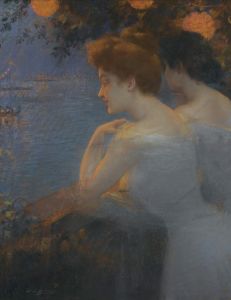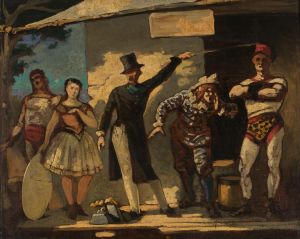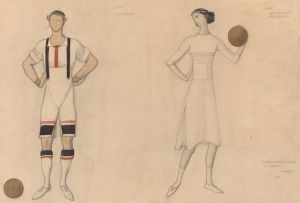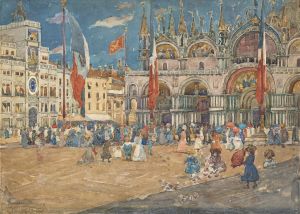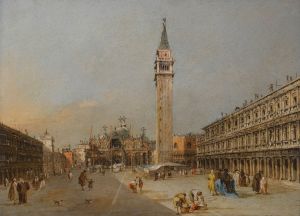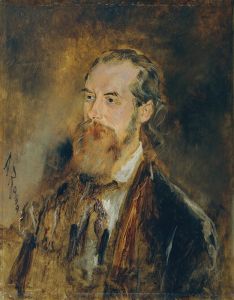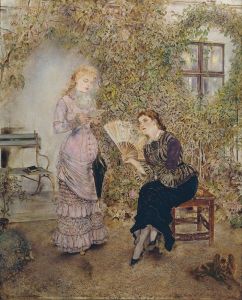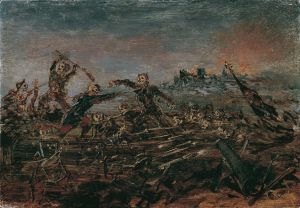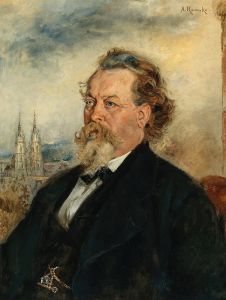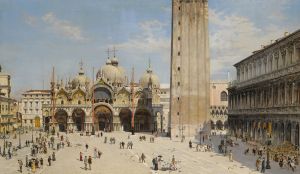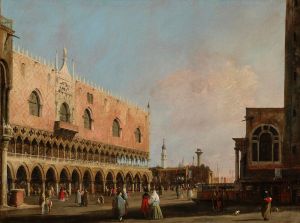
Karneval auf dem Markusplatz in Venedig
A hand-painted replica of Anton Romako’s masterpiece Karneval auf dem Markusplatz in Venedig, meticulously crafted by professional artists to capture the true essence of the original. Each piece is created with museum-quality canvas and rare mineral pigments, carefully painted by experienced artists with delicate brushstrokes and rich, layered colors to perfectly recreate the texture of the original artwork. Unlike machine-printed reproductions, this hand-painted version brings the painting to life, infused with the artist’s emotions and skill in every stroke. Whether for personal collection or home decoration, it instantly elevates the artistic atmosphere of any space.
Anton Romako's painting "Karneval auf dem Markusplatz in Venedig" (Carnival at St. Mark's Square in Venice) is a notable work by the Austrian artist, who is recognized for his contributions to 19th-century European art. Romako, born in 1832 in Atzgersdorf, Austria, was an artist whose career spanned several decades, during which he developed a distinctive style that often combined elements of realism and romanticism.
The painting depicts the vibrant and lively atmosphere of the Carnival of Venice, an annual festival known for its elaborate masks, costumes, and festive activities. St. Mark's Square, or Piazza San Marco, serves as the iconic backdrop for this scene. The square is one of the most famous public spaces in the world and a central landmark in Venice, Italy. It is surrounded by stunning architecture, including St. Mark's Basilica, the Doge's Palace, and the Campanile, which contribute to its grandeur and historical significance.
In "Karneval auf dem Markusplatz in Venedig," Romako captures the essence of the carnival with a focus on the bustling crowd and the joyous atmosphere. The painting likely features a variety of figures in traditional Venetian masks and costumes, engaging in the festivities that characterize the carnival. The use of color and light in the painting would be expected to reflect the lively and dynamic nature of the event, showcasing Romako's skill in rendering complex scenes with attention to detail and emotion.
Romako's work is often noted for its psychological depth and innovative composition. While he was not as widely recognized during his lifetime as some of his contemporaries, his paintings have gained appreciation for their unique approach and emotional intensity. "Karneval auf dem Markusplatz in Venedig" is an example of how Romako was able to capture the spirit of a cultural event while also exploring the interactions and emotions of the individuals within the scene.
The Carnival of Venice itself has a long and storied history, dating back to the 12th century. It is renowned for its elaborate masks, which were originally used to conceal the wearer's identity and allow people of different social classes to mingle freely. Over the centuries, the carnival has evolved, but it remains a symbol of Venetian culture and tradition, attracting visitors from around the world.
Romako's depiction of the carnival at St. Mark's Square would have been informed by his own experiences and observations, as he traveled extensively throughout Europe during his lifetime. His exposure to different cultures and artistic movements likely influenced his work, allowing him to create paintings that resonate with a sense of place and time.
In summary, "Karneval auf dem Markusplatz in Venedig" by Anton Romako is a painting that captures the vibrant and festive spirit of the Carnival of Venice, set against the iconic backdrop of St. Mark's Square. Through his use of color, composition, and attention to detail, Romako brings to life the joyous atmosphere of this historic event, reflecting both the cultural significance of the carnival and his own artistic vision.





